Fish nutritionist speaks on the importance of finding ‘complete’ and viable alternative sources of omega-3 fatty acids
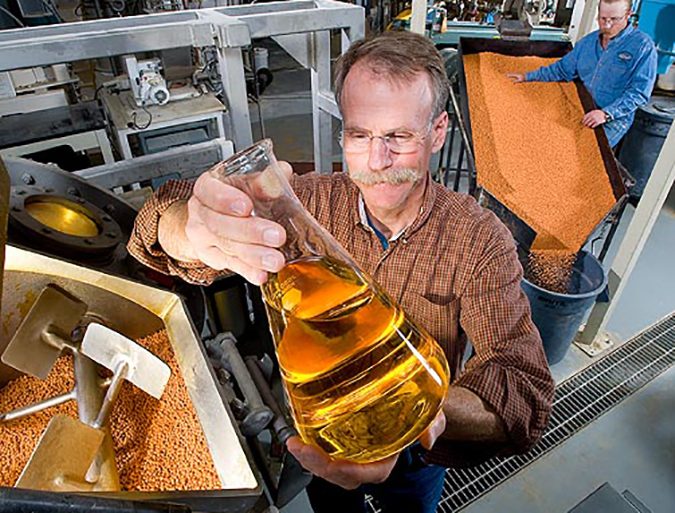
When asked about the details of his current “emeritus” designation with the U.S. Department of Agriculture (USDA), where he was employed as a fish nutritionist for more than 14 years, Rick Barrows joked, “What it really means is you don’t get paid but you get to volunteer and help out.”
Many would agree that Barrows has helped aquaculture quite a bit over his career. As the industry undertook a massive initiative to reduce its dependency on marine resources, the aquafeed sector needed to innovate in order to keep fish healthy and nutritious sources of protein, only with less fishmeal and fish oil in their diets. Assistance from government agencies like the USDA’s Agricultural Research Service (ARS) and the fish nutrition and physiology work that Barrows headed up were instrumental in achieving progress on that front.
Barrows’ retirement from the USDA became official in August, and he is now building his consulting firm Aquatic Feed Technologies to carry on the work he did with ARS. The Advocate caught up with him in November at his home in Bozeman, Montana, and found him still hard at work and looking forward to an F3 Challenge meeting in January, where the “fish free feed” contestants will convene for presentations. The Global Aquaculture Advocate will be reporting from the invite-only meeting.
What is the USDA’s role in advancing aquaculture?
There’s both a mission statement and a vision statement for the aquaculture program of the Agricultural Research Service on their website, but to summarize, the goal is to conduct aquaculture research and technology transfer to support a safe, sustainable domestic seafood supply. The focus is on supporting existing seafood production within the United States.
Very little of the seafood we produce in the United States is farm-raised. What area of aquaculture, in terms of species, were you most involved with?
ARS operates on five-year project plans. Each group of scientists is given an assignment and I was with the Trout Grain Project, so we were focused on assisting the trout industry.
Trout are produced in all 50 states. But the majority, probably 75 percent, comes from southern Idaho. That’s where all the springs are, where all the water is. There’s a limited amount of springs, so you won’t see much growth through traditional methods. Recirculating aquaculture might have a place in future expansion of the trout industry, closer to population centers.
There’s a multitude of small farms across the United States. There are trout farms everywhere – some are food fish, some are for pond stocking. There’s even some in Hawaii. Traditional earthen ponds are often used, in addition to concrete raceways.
Within the Trout Grains Project, I was assigned as the nutritionist and I was hired to develop alternative feeds to the traditional fishmeal-based feeds. In order to do that you need alternative ingredients, and the trout industry itself isn’t large enough to support the development of multiple new ingredients. So we not only worked with trout but a variety of other species, including salmon, pompano, Arctic char, white sea bass, yellowtail and others.
Tell me about your goals for Aquatic Feed Technologies. 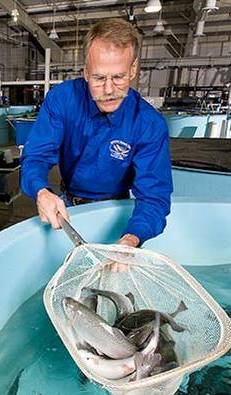
The primary goal is to continue what I did with ARS in helping to develop a safe, sustainable domestic seafood supply. I strongly believe in that mission and hope to assist companies in a variety of pursuits, including feed ingredient development, evaluation, regulatory approval and alternative feed development. This could include feeds ranging from larval weaning or starter feeds, through grow-out and on to [broodstock] feeds.
Is changing the fish’s diet at various points in its life – including finishing feeds with a higher fishmeal or fish oil inclusion than what they were raised on – a widely accepted practice?
Yes, I’ve found a lot of that research work over the years and I think you’re going to see more and more life stage-dependent diets. Those types of diets I mentioned earlier are life stage-dependent diets. Finishing diets can be formulated around many different nutrients including the heart and brain health fatty acids, phosphorus, amino acids and others depending on the specific situation of species and rearing system.
You’re obviously aware of all the innovation concerning alternative ingredients, all with the goal of reducing the aquaculture industry’s dependence on marine resources. In your view, what has been the biggest ‘win’ in this area?
Reducing aquaculture’s dependence on marine products is crucial for several reasons. During the discussion on marine products, however, the fact is often forgotten that the agriculture community needs to expand the food supply drastically as the human population continues to expand. Fishmeal and fish oil are nutritious products, but there’s simply not enough available for this expansion to continue. The state of the forage fish population in the wild is another area of great concern. There are very few ingredients that can truly replace fishmeal since it carries so many micronutrients. We can successfully remove fishmeal entirely from the diet of carnivorous fish, however, but only if all the essential nutrients are provided from other sources. These includes vitamins, amino acids, fatty acids and trace and macro-minerals.
If or when we run out of fish oil, it is not only bad for aquaculture but catastrophic for the human population.
Sorry to take so long to get to your question, but I think the biggest win will be when there’s a commercial source of essential fatty acids found in fish oil that costs less than fish oil, because there’s simply not an alternative to fish oil available right now. This is not just an aquafeed issue but a human health issue as well because about 50 percent of the human brain is made up of fatty acids found predominantly in fish oil. That is why these fatty acids are added to human infant formulas. If or when we run out of fish oil, it is not only bad for aquaculture but catastrophic for the human population. There are some products in the pipeline, but the complete package is not there yet, that I know of. There are several new high-protein ingredients available, but really no complete essential fatty acid/fish oil source.
There have been many small wins that were put together to produce a successful alternative feeds. Small wins include not only alternative ingredients but also a greater depth of knowledge of nutrient requirements for many species. So I think the best is yet to come.
We’ve also seen that with these substitutions come consequences, in that the nutritional makeup of the fillets that we eat are – while still very healthful – containing lower levels of omega-3 fatty acids, which is the No. 1 selling point for fish, particularly salmon. How concerned are you about the nutritional value of the end product that aquaculture is producing, and should the industry be more concerned about this?
Well, I’m very concerned about the nutritional quality and nutritional value, but I wasn’t surprised at all to hear that the level of omega-3 fatty acids was going down in farmed salmon because fish deposit fatty acids in the pattern found in the diet. A diet that contains a high percentage of EPA and DHA – the essential long-chain omega-3 fatty acids that are heart and brain-healthy – will produce a final product high in EPA and DHA.
This is where an affordable source of these essential fatty acids is needed. There isn’t one right now. You have to dilute fish oil with other energy sources to keep the energy level up. I believe that the target for the EPA and DHA levels in farmed fish fillets should be what is found in wild fish. But even if those levels have dropped off by 50 percent, for example, one could eat farmed salmon twice a week instead of once a week for wild fish and be just as healthy. Or you could do as I do, which is eat twice as much as recommended every time I eat salmon.
So I am concerned about it. Should farmed fish be responsible for providing exactly the same amount of omega-3 fatty acids as wild fish? That’s a question that can be debated, but if we don’t have that source of omega-3s to put into the fishes diet, and we still want to keep producing more fish, we’re kind of at a Catch-22.
Since feed is the top expense for aquaculture operators raising “fed” species – some have estimated it at 60 percent – would you agree that all the feed formulations and work with alternative ingredients is where aquaculture has advanced the furthest?
I do agree that there’s a lot of focus these days on feeds. There’s a lot of interest from the general public as well as from the industry itself. I don’t know where everybody was 30 years ago when I was getting started but it’s nice to see the attention at this point. I do think there has been significant advances in other fields as well, including production systems, as you mentioned, water quality and genetics, which have a lot of potential to increase production. But I do agree that improved feeds result in greater production, lower environmental footprint and affordable products. And since you mentioned salmon earlier, a major factor in the increased growth we’ve observed over the last 20 or 30 years, and then a reduction in time to market was the development of extrusion technology. This method of feed manufacturing allows the production of nutrient-dense diets that provide extra energy for increased growth in salmon and trout.
What are the current trends in fish feed costs? I know that fishmeal costs roughly tripled a decade ago, and remain around $2,000 per ton. Is it becoming more affordable to farm fish?
Well, the price of fishmeal really isn’t a major factor as much as it used to be, since it’s become a smaller and smaller percentage of the total diet. Everybody wants a fish feed that costs less but the fish grow faster. That’s difficult to obtain. The price of most all commodities is increasing. I don’t think we’re going to see feed ingredients going down in price. Usually alternative feeds are more expensive because they’re using new and more costly ingredients.
Many alternative ingredients are from terrestrial agriculture, so there are other sustainability questions to be asked, in terms of water use and impact on our land like soil erosion. Is this something that aquaculture needs to be more engaged in?
Feed manufacturers and feed ingredient suppliers are very focused on all those issues. I don’t like using the word “sustainable” because it’s not very well defined and means different things to different groups. So many different groups have different specifications for what they would like for their feeds. Some insist on no marine products; some specify no terrestrial animal product, and some are a blend. Also considered very important when evaluating potential ingredients is land and water use, carbon footprint, and competition with animal feed or human food, especially from an investment standpoint.
Speaking of investors, looking at aquaculture, how attractive is this industry? Still scary?
I guess I’m not a good one to answer that question, as I haven’t been out front trying to raise capital. But I’m sure it probably is scarier for investors than more developed industries. That being said, I am seeing major corporations from parallel industries moving into aquaculture one way or another at a faster rate recently.
Sourcing proteins and oils for fish feeds is one of the aquaculture industry’s greatest challenges, particularly as it pertains to omega-3s, as you’ve made clear. Other than fishmeal and fish oil, what sources of omega-3s show the most promise to you? Marine-based microalgae, or the single-cell organisms, methanotrophs, that Calysta is developing?
First, I’ll go back to your statement on fishmeal and fish oil – most nutritionists don’t account for an essential fatty acid requirement with the fishmeal. Most of the oil has been removed, and there will be about 10 or 12 percent fish oil so it’s not a major contributor. Fish oil, on the other hand, is the primary source of omega-3 fatty acids.
Some people, including myself, felt the goal of 100,000 tons of fish oil and fishmeal free feed was unaffordable and unachievable so nobody would win.
I’m open to any source of EFAs, essential fatty acids. Algae has been shown to be a good source of DHA; there’s a yeast that produces EPA; and a fungus that produces arachidonic acid, or ARA. Any combination is good, as long as there are no anti-nutrients, if you’re using the whole biomass carried along with the oil. If it’s an extracted oil, then it should be highly digestible and available. The methanotrophs (methane consuming bacteria) are very low in fat and oil, so they would not be a great source of EPA or DHA but are high-quality protein sources and seem to have some beneficial effects on the immune system and animal health. That effect is being observed in a lot of studies.
The industry-NGO dynamic has changed dramatically from years past, from opposition to collaboration. From your perspective, what has driven this change? Is it the adoption of best practices from a more responsible industry, certification or is it simply the fact that more can be achieved when differences are set aside to focus on common goals?
I agree, I have seen a major change in relations between the aquaculture industry and NGOs, going both ways. I agree that some have found that working together will create more progress than fighting each other all the time. Another factor is that once more seafood was produced via aquaculture than was harvested from the ocean, people could have realized the industry was not going to just go away, and could be an important food-production sector. Also, with the changes we’re seeing in the ocean, people are more concerned with ocean health for all inhabitants, and worried about where their seafood is going to come from in the future. I believe a variety of factors have affected people’s viewpoints and it has resulted in more progress in tackling these difficult problems with the food supply.
The F3 (Fish Free Feed) Challenge reached an exciting point, where eight semifinalists were named, teams of individual companies. What are your thoughts about this contest and the purpose it’s serving?
Full disclosure: I was not involved with F3 when it started but I am now an advisor on technical issues.
When I first heard about the F3 Challenge, I wasn’t sure if it would have much of an effect or not, primarily because of the fish oil component that’s so difficult to replace. Some people, including myself, felt the goal of 100,000 tons of fish oil and fishmeal free feed was unaffordable and unachievable so nobody would win. Now I think the winner is who produces the most, and the F3 team’s goal is to give all contestants some positive publicity on their efforts.
I’ve been very pleasantly surprised at the positive reaction that this challenge has generated and at the number of large companies interested in becoming involved. It’s great to see the F3 team using a carrot rather than a stick – or actually 200,000-plus carrots – to try to create positive change.
The prize money has doubled since the contest was first announced.
The number of companies that have come out of the blue, including major overseas and domestic feed and seafood companies, is amazing. They’ve heard about it and now want to be involved, whereas a couple of years ago they said, “No, we don’t do that.” I’m amazed.
The fishmeal industry objects to use of the term ‘fishmeal free’ as its sees a potential connotation that fishmeal is being removed or replaced because it is harmful or unsustainable in some way, which isn’t the case or the intent. There’s simply a shortage and this contest aimed to inspire innovation to overcome the omega-3 gap. Are you familiar with this dynamic?
Oh, definitely. I’ve been harshly corrected several times. I once called a plant protein concentrate more sustainable than fishmeal, and several journalists let me know they had a different opinion. That’s one reason I don’t use the word sustainable anymore.
I look at the F3 challenge a bit differently than some in industry. It’s the same reason why, in our research program at ARS, instead of trying to reduce fishmeal, from a research perspective, I wanted to totally eliminate it. If you can do that, then you can definitely reduce it. So, we wanted to try to push the diet as much as you can and figure out how to get that growth back. I think that is what the F3 challenge can do – if a company can come out with a vegan diet for rainbow trout, then of course they can add 10 to 15 percent [fish oil] and still get peak performance.
You’ve mentioned the word ‘vegan’ – is there going to be a market for vegan fish, or fish that were fed a vegan diet? Will fish feed be marketed in that way, as a consumer-facing attribute?
Oh yes. I might be using the word improperly, but when I say “vegan” diet I mean a diet with no fishmeal and no animal products – all plant- and algae-based.
A California-based company, TwoXSea, which owns McFarland Springs Trout Company, has been feeding its fish a plant-based, fishmeal and fish oil free diet. They sell all they can produce and they sell to 60 of the top restaurants in San Francisco. It’s not the whole market but it’s a niche. They have been an early adopter for what I’ve been working on for the past 15 years.
They’ve been using mixed nutmeal – almonds and pistachios – and have been completely fishmeal and fish oil free for six years now. Nutmeal is expensive, as the primary protein. The nuts they use, however, cannot be certified for human consumption – they are too big, too green or too pale. I’ve seen pistachios the size of golf balls. They’ve just been fed to cattle in the past.
McFarland Springs Trout has been feeding an algal DHA as a source of omega-3s, to avoid feeding fish oil. In January, the FDA [Center for Veterinary Medicine] or AAFCO [Association of American Feed Control Officials] modified the definition of “fat product” to exclude algae as an ingredient in fish feeds. This is the exact same algae that is approved to be added to human infant formulas, but we can’t feed it to fish. The United States and Canada are the only two countries in the world where you can’t feed this important algae to fish, and I hear Canada is about to approve it. It is legal to feed it to trout in Mexico and then import the fish into the United States, and for the San Francisco market this is what may need to be done. It is hard to make sense of this situation.
Now that you've reached the end of the article ...
… please consider supporting GSA’s mission to advance responsible seafood practices through education, advocacy and third-party assurances. The Advocate aims to document the evolution of responsible seafood practices and share the expansive knowledge of our vast network of contributors.
By becoming a Global Seafood Alliance member, you’re ensuring that all of the pre-competitive work we do through member benefits, resources and events can continue. Individual membership costs just $50 a year.
Not a GSA member? Join us.
Author
-
James Wright
Editorial Manager
Global Aquaculture Alliance
Portsmouth, NH, USA
[103,114,111,46,101,99,110,97,105,108,108,97,97,103,64,116,104,103,105,114,119,46,115,101,109,97,106]
Tagged With
Related Posts
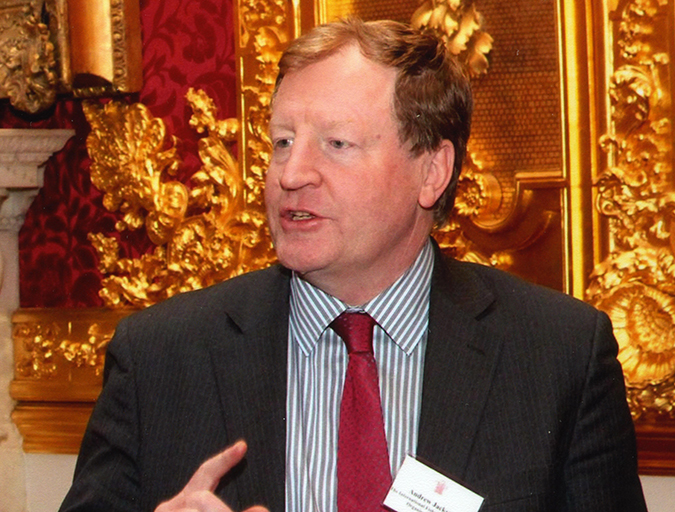
Aquafeeds
Aquaculture Exchange: Andrew Jackson, IFFO
Aquaculture remains dependent on fishmeal and fish oil, crucial marine ingredients in aquafeeds, particularly at key life stages. Andrew Jackson, technical director at IFFO and one of the world’s foremost fishmeal experts, tells the Advocate that the two industries can coexist well into the future if properly managed.

Aquafeeds
Why I chose to judge the F3 challenge
In an opinion piece for the Advocate, the director of ocean sustainability science at the New England Aquarium talks about the F3 Challenge and what the first X Prize for aquaculture could do for the industry: drive innovation.
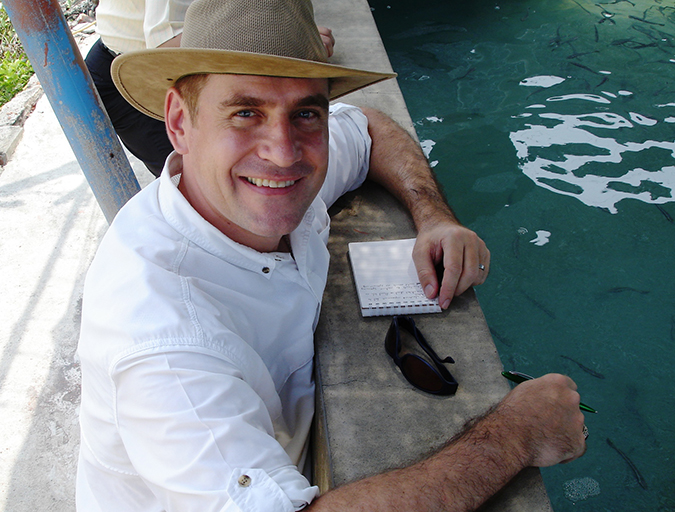
Aquafeeds
Aquaculture Exchange: Lukas Manomaitis, USSEC
The U.S. Soybean Export Council is a huge supporter of aquaculture growth globally, as so many aquafeed formulators rely on U.S. soy to create nutritious diets. The Southeast Asia senior technical advisor for USSEC’s aquaculture program talks about this symbiotic partnership.
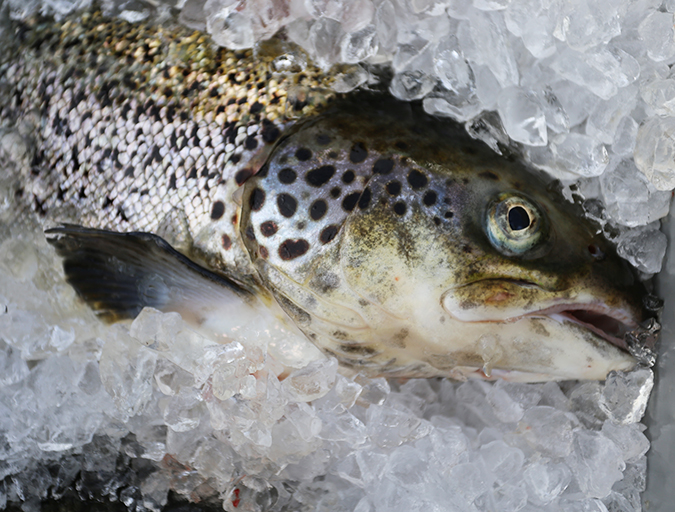
Aquafeeds
Fishmeal-free Atlantic salmon feed formulation shows promise
A recent study evaluated the effects of a fishmeal-free diet on Atlantic salmon performance and fillet quality during successful growout to market-size in a commercial-scale, land-based, closed-containment system using water recirculation technology. Test fish performed well, with 97 percent survival during the 10-month growout period.



